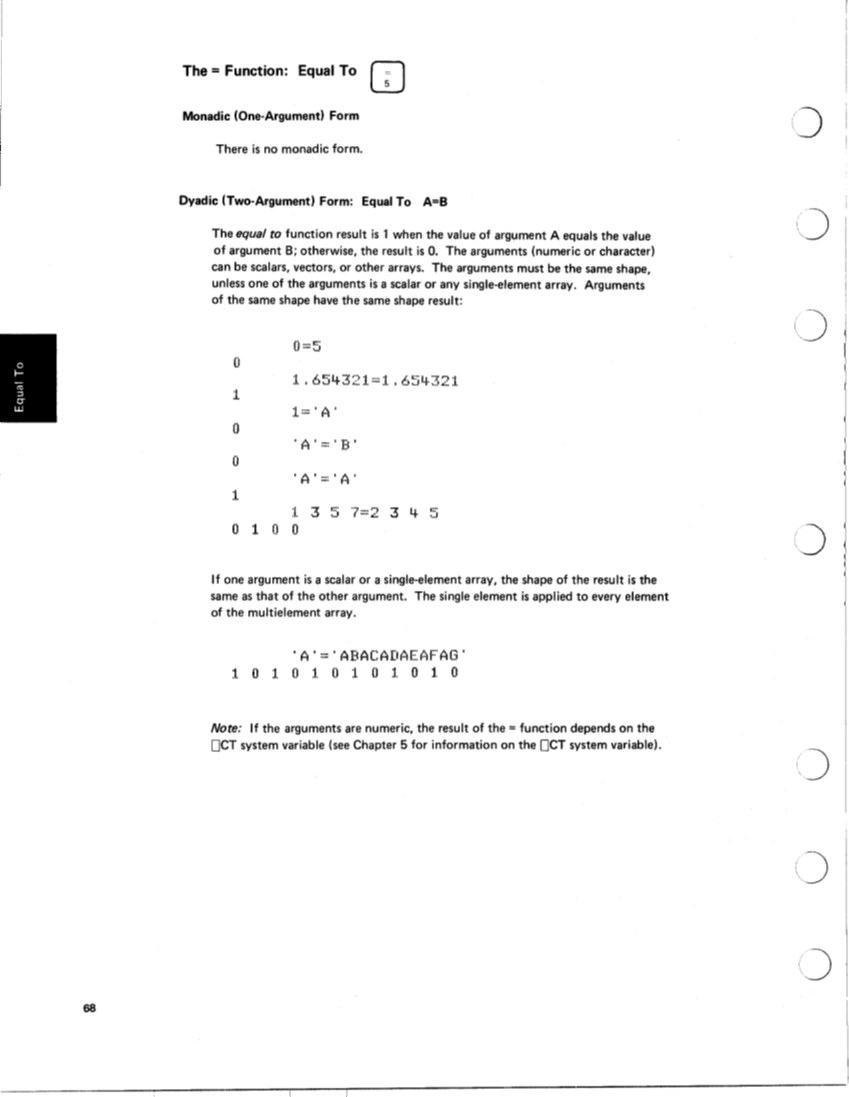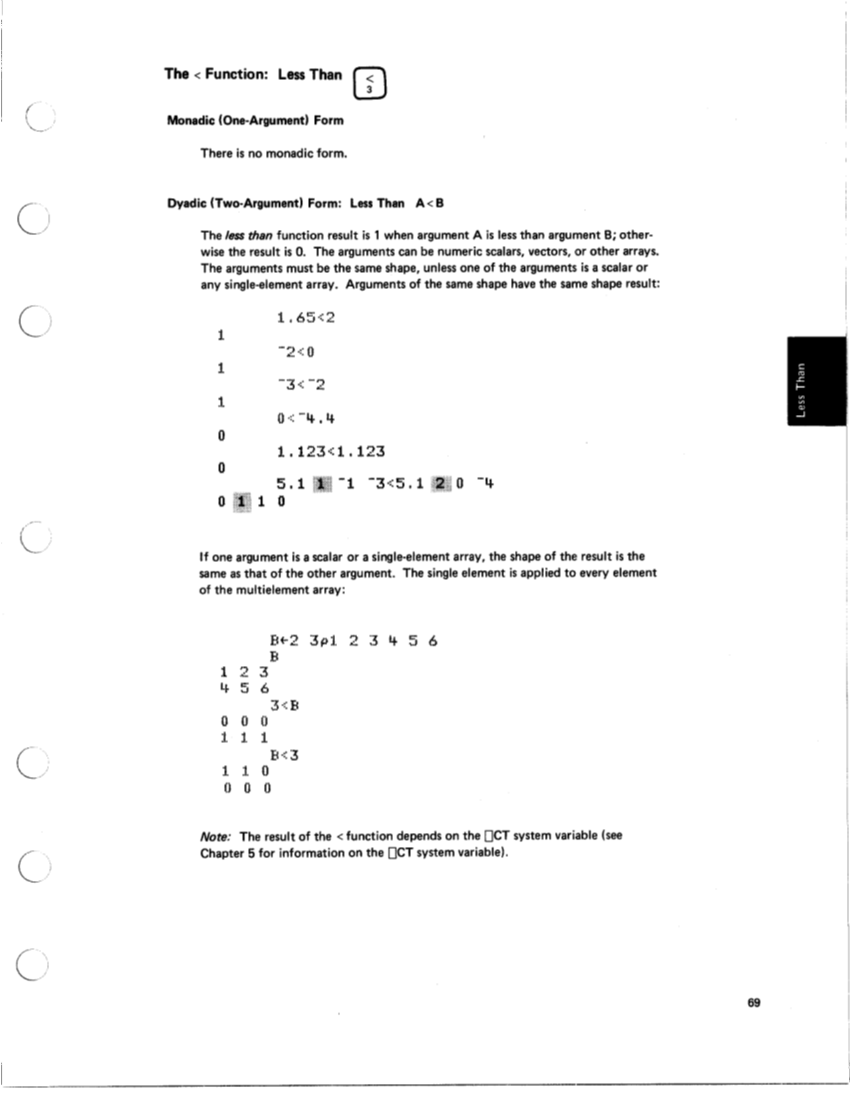68
The = Function: Equal To
Monadic (One-Argument) Form
There is no monadic form.
Dyadic (Two-Argument) Form: Equal To A=B
The equal to function result is 1 when the value of argument A equals the value
of argument B; otherwise, the result is 0. The arguments (numeric or character)
can be scalars, vectors, or other arrays. The arguments must be the same shape,
unless one of the arguments is a scalar or any single-element array. Arguments
of the same shape have the same shape result:
If one argument is a scalar or a single-element array, the shape of the result is the
same as that of the other argument. The single element is applied to every element
of the multielement array.
Nore: If the arguments are numeric, the result of the = function depends on the
OCT system variable (see Chapter 5 for information on the OCT system variable).
The = Function: Equal To
Monadic (One-Argument) Form
There is no monadic form.
Dyadic (Two-Argument) Form: Equal To A=B
The equal to function result is 1 when the value of argument A equals the value
of argument B; otherwise, the result is 0. The arguments (numeric or character)
can be scalars, vectors, or other arrays. The arguments must be the same shape,
unless one of the arguments is a scalar or any single-element array. Arguments
of the same shape have the same shape result:
If one argument is a scalar or a single-element array, the shape of the result is the
same as that of the other argument. The single element is applied to every element
of the multielement array.
Nore: If the arguments are numeric, the result of the = function depends on the
OCT system variable (see Chapter 5 for information on the OCT system variable).









































































































































































































































